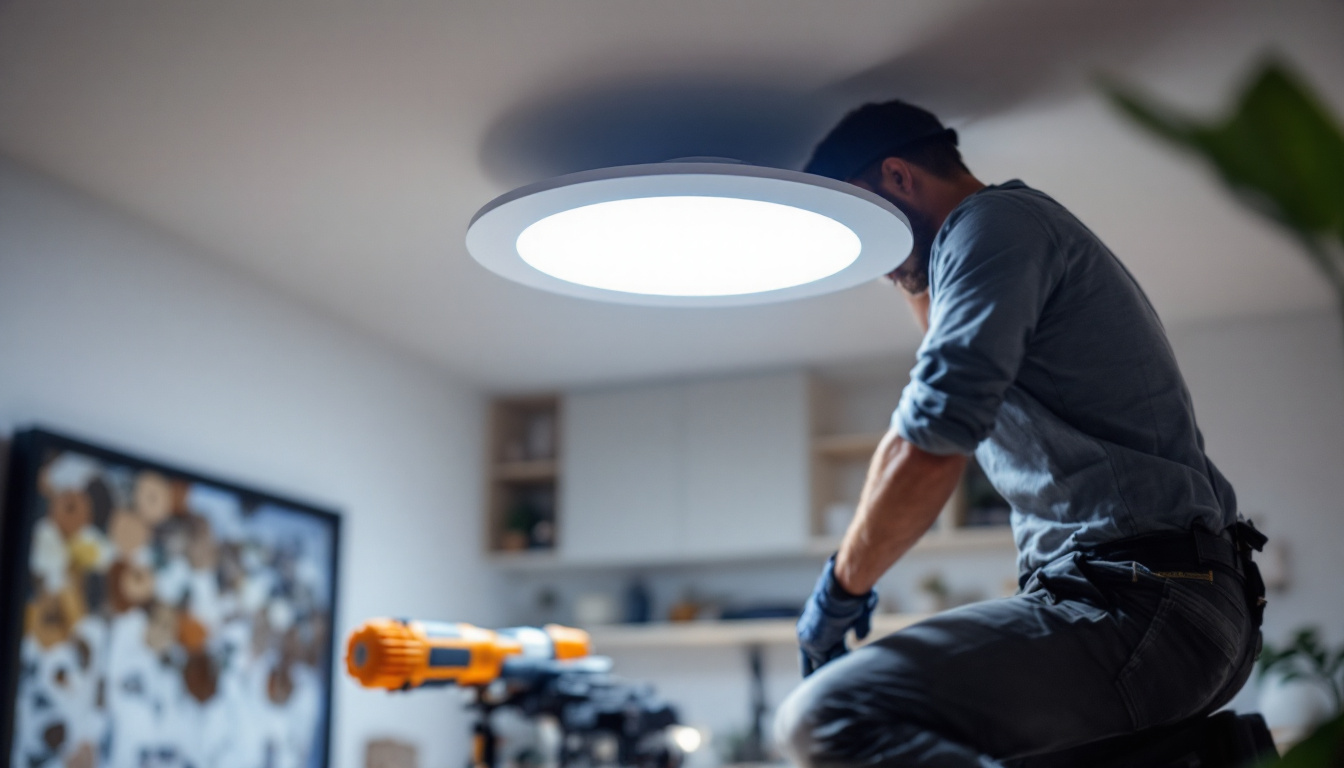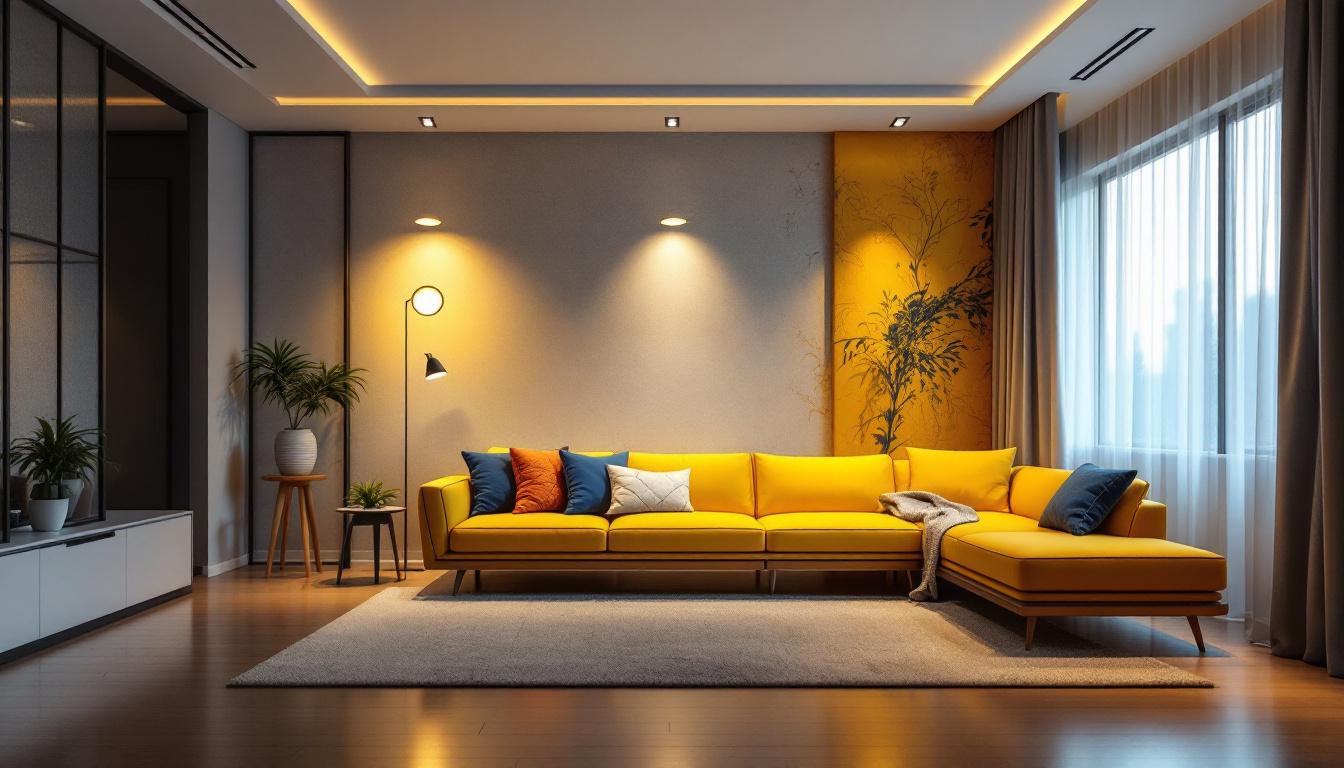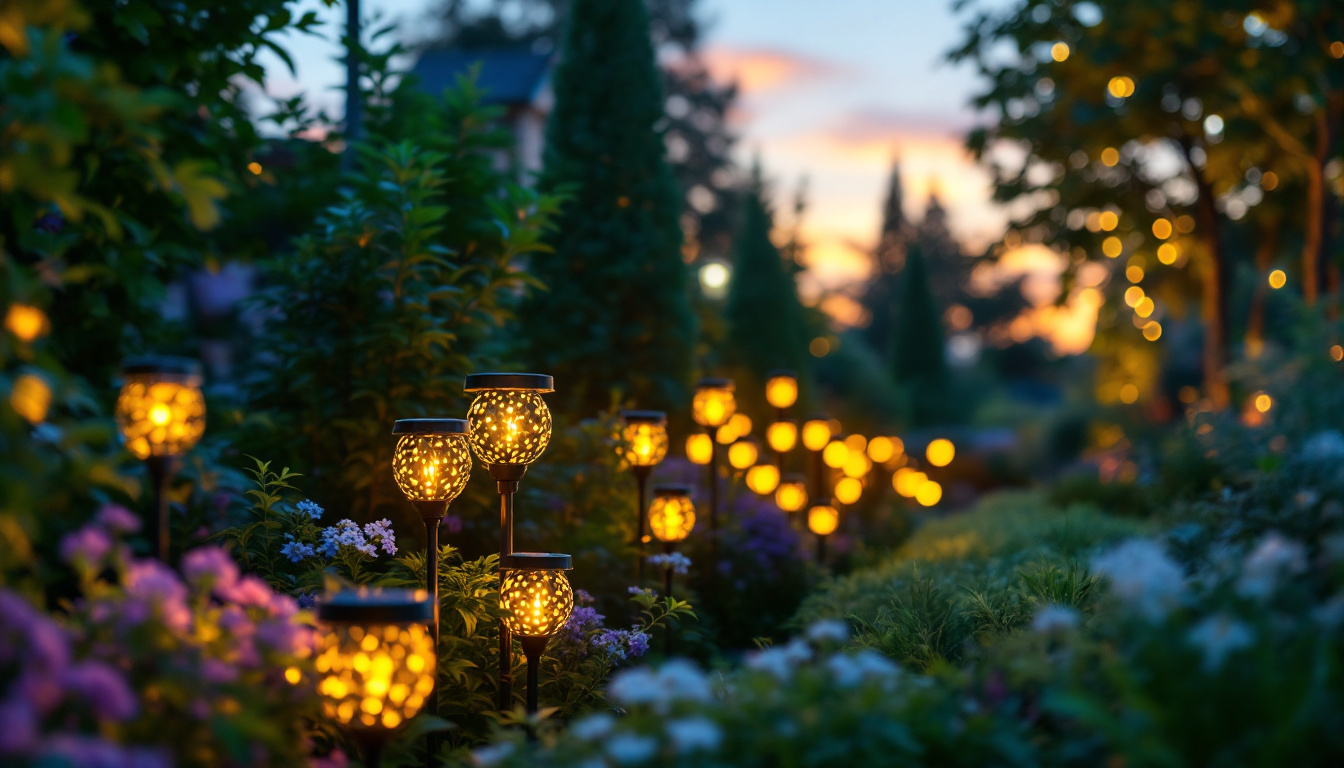
In the ever-evolving world of lighting technology, recessed lighting has gained immense popularity for its sleek design and energy efficiency. As a lighting contractor, understanding the intricacies of LED recessed lighting retrofit conversion kits is essential for providing clients with the best solutions. This article delves into six crucial insights that every lighting contractor should know about these kits, ensuring you stay ahead in the industry.
LED recessed lighting retrofit conversion kits are designed to replace traditional incandescent or fluorescent recessed lighting fixtures with energy-efficient LED options. These kits typically include all the necessary components to upgrade existing fixtures without needing to replace the entire housing. This not only saves time but also reduces labor costs, making it an attractive option for contractors.
One of the primary advantages of using LED retrofit kits is their energy efficiency. LED lights consume significantly less power than traditional bulbs, leading to reduced energy bills for homeowners and businesses alike. Additionally, these kits have a longer lifespan, which means less frequent replacements and lower maintenance costs.
Another benefit is the ease of installation. Most retrofit kits are designed to fit seamlessly into existing housings, allowing for quick upgrades without extensive modifications. This can be a significant selling point for contractors looking to streamline their workflow and provide clients with timely service. Moreover, the reduced heat output of LED lights contributes to a cooler environment, which can be particularly beneficial in commercial spaces where climate control is a priority.
Typically, a retrofit kit includes an LED module, a trim, and a driver. The LED module is the heart of the system, providing the light output, while the trim enhances the aesthetic appeal of the fixture. The driver is essential for regulating power to the LED module, ensuring optimal performance and longevity.
Understanding these components is crucial for contractors, as it allows for better troubleshooting and customization options. Familiarity with various types of trims and drivers can also help contractors recommend the best solutions based on client needs. Additionally, many retrofit kits now offer features such as dimming capabilities and color temperature adjustments, allowing users to create the perfect ambiance for any space. This flexibility not only enhances the functionality of the lighting but also caters to the growing trend of personalized home and office environments, where lighting plays a key role in mood and productivity.
When selecting LED recessed lighting retrofit conversion kits, several factors should be taken into account. These considerations can significantly impact the quality of the installation and the satisfaction of the end user.
Before purchasing retrofit kits, it is vital to assess the compatibility with existing recessed fixtures. Not all kits fit all housings, so contractors must ensure that the chosen kit can be easily integrated into the current setup. This may involve checking the size, shape, and type of the existing fixtures to avoid any installation headaches later on. Additionally, it is beneficial to consider the electrical connections; some older fixtures may require adapters or modifications to accommodate newer LED technology, which can add to the overall project timeline and cost.
The light output and color temperature are critical aspects that influence the ambiance of a space. Contractors should consider the lumen output of the retrofit kits to ensure they meet the lighting needs of the area being upgraded. Additionally, the color temperature—measured in Kelvins—affects the mood of the space. Warmer tones (2700K-3000K) are often preferred for residential settings, while cooler tones (4000K-5000K) may be more suitable for commercial environments. It’s also worth noting that some retrofit kits offer adjustable color temperatures, allowing users to switch between warm and cool light depending on the time of day or activity, providing greater flexibility and enhancing the functionality of the space.
Many clients appreciate the ability to control the brightness of their lighting. Therefore, it is essential to choose retrofit kits that are compatible with dimmer switches. Not all LED lights are dimmable, and using a non-dimmable LED with a dimmer switch can lead to flickering or reduced lifespan. Ensuring compatibility will enhance customer satisfaction and prevent future issues. Furthermore, it’s important to consider the type of dimmer switch being used; some older dimmers may not work effectively with modern LED technology, potentially leading to performance issues. Upgrading to a compatible dimmer can not only improve the functionality of the lighting but also offer a smoother dimming experience, allowing for a more tailored lighting solution that meets the varying needs of the space throughout the day.
Installing LED recessed lighting retrofit kits can be straightforward, but following best practices can enhance the quality of the installation and ensure longevity. Here are some essential tips for lighting contractors.
Before beginning the installation, it is crucial to prepare the workspace adequately. This includes turning off the power to the existing fixtures and ensuring that all tools and materials are readily available. A clean and organized workspace minimizes the risk of accidents and allows for a more efficient installation process. Additionally, consider using drop cloths to protect flooring and furniture from dust and debris generated during the installation. Properly labeling the tools and materials can also streamline the process, allowing contractors to quickly find what they need without wasting time searching.
Each retrofit kit comes with specific installation instructions provided by the manufacturer. Following these guidelines is essential to ensure proper installation and maintain warranty coverage. Contractors should take the time to read through the instructions thoroughly before starting the installation. It’s also beneficial to familiarize yourself with any unique features of the kit, such as compatibility with smart home systems or specific dimmer switches. Understanding these nuances can help contractors provide clients with additional value by offering insights into how to maximize the benefits of their new lighting system.
Once the retrofit kit is installed, testing the system is critical. This includes checking for proper operation, verifying that the light output meets expectations, and ensuring that any dimming features function correctly. Testing not only ensures client satisfaction but also helps identify any potential issues before the job is completed. Furthermore, contractors should take the opportunity to educate clients on how to operate their new lighting system, including any maintenance tips or troubleshooting steps. Providing this information can enhance the client relationship and demonstrate professionalism, leading to potential referrals and repeat business.
While installing LED recessed lighting retrofit kits can be straightforward, contractors may encounter challenges along the way. Understanding these common issues and their solutions can save time and enhance the overall installation experience.
One common issue is inconsistent light output, which can occur if the retrofit kit is not compatible with the existing housing or if the driver is not functioning correctly. To address this, contractors should ensure that they are using compatible components and verify that the driver is properly connected and functioning.
Flickering lights can be a frustrating problem, often caused by incompatible dimmer switches or poor connections. Contractors should recommend dimmers specifically designed for LED lights to prevent flickering. Additionally, ensuring all connections are secure can help eliminate this issue.
Overheating can lead to reduced lifespan and performance of LED lights. It is essential to check that the retrofit kit is installed in a well-ventilated area and that the housing is not obstructing airflow. If overheating persists, it may be necessary to consider alternative kits or configurations that provide better heat dissipation.
The lighting industry is continuously evolving, with new technologies and trends emerging regularly. For lighting contractors, staying updated on these changes is crucial for maintaining a competitive edge.
Advancements in LED technology, such as smart lighting and tunable white options, are becoming increasingly popular. Contractors should familiarize themselves with these technologies to offer clients the latest solutions that enhance energy efficiency and user experience.
Regulations regarding energy efficiency and lighting standards can change, impacting the products available in the market. Contractors should stay informed about local and national regulations to ensure compliance and provide clients with the best options available.
Investing in training and certifications can significantly enhance a contractor’s credibility and expertise. Many organizations offer courses on LED technology, installation techniques, and energy efficiency standards. Pursuing these opportunities can lead to better job performance and increased client trust.
LED recessed lighting retrofit conversion kits offer a wealth of benefits for both contractors and clients. By understanding the components, installation tips, and common challenges associated with these kits, lighting contractors can provide exceptional service and solutions. Staying informed about industry trends and advancements will further enhance a contractor’s ability to meet client needs and succeed in a competitive market.
As the demand for energy-efficient lighting continues to rise, embracing LED technology and retrofit kits will position contractors as leaders in the field. With the right knowledge and skills, lighting professionals can transform spaces while delivering value and satisfaction to their clients.
Ready to elevate your lighting projects with the best LED recessed lighting retrofit conversion kits on the market? Look no further than LumenWholesale, where we provide contractors with superior, spec-grade lighting products at unbeatable wholesale prices. Say goodbye to middleman markups and hello to our extensive selection that meets the highest industry standards. With LumenWholesale, bulk buying is a breeze, thanks to our hassle-free process and free shipping. Don’t compromise on quality or price. Experience the perfect blend of quality, affordability, and convenience today by visiting Wholesale Lighting at the Best Value and take the first step towards transforming your lighting solutions.

Discover everything about 6 LED retrofit downlights in this contractor edition—benefits, installation tips, and cost savings.

Discover the ultimate guide to selecting top-rated solar garden lights with insights from lighting contractors.

Discover the ultimate guide for lighting contractors on 4ft LED bulbs.

Discover how explosion-proof lamps can give you a competitive edge in securing more lighting contracts.